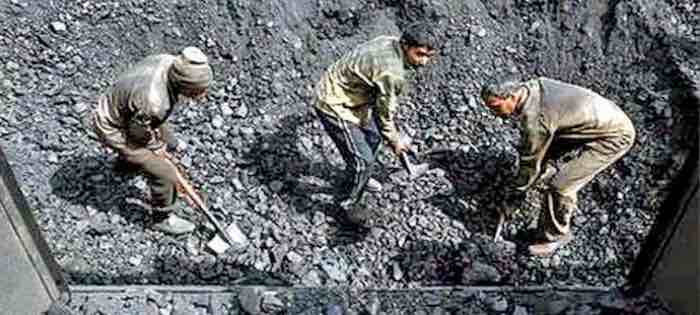Overall, 1,600 coal plants are planned or are under construction in 62 countries
Coal is King in India and Elsewhere

India is going to use coal as its backbone energy for the next thirty years, is buying coal mines all around the world, and will double production by 2020 to a massive 1,500 million tons per annum.
1
At present the country accounts for eight percent of the world's total coal consumption. About two-thirds of India's electricity generation comes from coal.
India's population is 1.35 billion. It is forecast to overtake China as the world's most populous nation around 2024
The Narendra Modi government, which had set an ambitious 63,000 MW nuclear power capacity addition target by the years 2031-32, has cut it to 22,480 MW, or by roughly two-thirds. The drastic reduction in planned construction of new reactors will diminish India's plans to rely on nuclear energy from 25% of electrical generation to about 8-10%. The balance of new power requirements will likely be met by use of India's enormous coal deposits and others it purchases. 2
Despite the Narendra Modi government's claims of being committed to the Paris climate agreement, India registered one of the largest increases in greenhouse gas emissions in 2016.3
India's population is 1.35 billion. It is forecast to overtake China as the world's most populous nation around 2024. At last count, 20% of India did not have electricity, which is about 270 million people still to be connected, presumably thanks to coal. 1
Energy problems are massive in India. In July 2012, the country suffered the largest electrical blackout in history, affecting an area encompassing about 670 million people, or roughly 10 percent of the world's population. Three of the country's interconnected northern power grids collapsed for several hours, as blackouts extended almost 2,000 miles, from India's eastern border with Myanmar to its western border with Pakistan. 4
It had all the makings of a disaster movie. More than half a billion people without power. Trains motionless on the tracks. Miners trapped underground. Subway lines paralyzed. Traffic snarled in much of the national capital.
For a country considered a rising economic power, Blackout Tuesday—which came a day after another major power failure—was an embarrassing reminder of the intractable problems still plaguing India. 4
So what does this mean for the Paris accord?
So what does this mean for the Paris accord?
Despite promises made in the accord, global emissions of carbon dioxide have continued to rise. Among the main factors contributing to rising emissions is the growing use of coal in developing countries in Asia and Africa and even some countries in Europe. As a result, a number of governments, including those of Germany and France have announced their countries will miss the near-term emissions reduction targets they set for themselves.
5
Germany is building 23 new coal fired power plants to overcome the very serious deficiencies of green energy despite bragging about their being a leader in the green energy transformation.
6
Overall, 1,600 coal plants are planned or are under construction in 62 countries. The new plants would expand the world's coal fired power capacity by 43 percent. The fleet of new coal plants would make it virtually impossible to meet the goals set in the Paris climate accord.
7
References
- Joanne Nova, “India meets climate goals early by doubling coal, and keeping it as main energy source for next 30 years,” joannenova.com, May 17, 2017
- Joanne Nova,” A not so dead stranded asset: India chooses more coal, cancels 57 nuclear plants,” joannenova.com, April 17, 2018
- Dan Yurman, “India slashes plans for new nuclear reactors by two-thirds,” energypost, April 16, 2018
- Jim Yardley and Gardiner Harris, “2nd day of power failures cripples wide swath of India,” The New York Times, July 21, 2012
- Kenneth Artz, “Nations failing to keep Paris climate commitments,” Environment & Climate News, April 2018
- Michael S. Coffman, “Power Down,” Range Magazine, Spring 2017
- Hiroko Tabuchi, “As Beijing joins climate fight, Chinese companies build coal plants,” The New York Times, July 1, 2017
Jack Dini -- Bio and
Archives |
Comments
Jack Dini is author of Challenging Environmental Mythology. He has also written for American Council on Science and Health, Environment & Climate News, and Hawaii Reporter.
 India is going to use coal as its backbone energy for the next thirty years, is buying coal mines all around the world, and will double production by 2020 to a massive 1,500 million tons per annum. 1
At present the country accounts for eight percent of the world's total coal consumption. About two-thirds of India's electricity generation comes from coal.
India is going to use coal as its backbone energy for the next thirty years, is buying coal mines all around the world, and will double production by 2020 to a massive 1,500 million tons per annum. 1
At present the country accounts for eight percent of the world's total coal consumption. About two-thirds of India's electricity generation comes from coal.